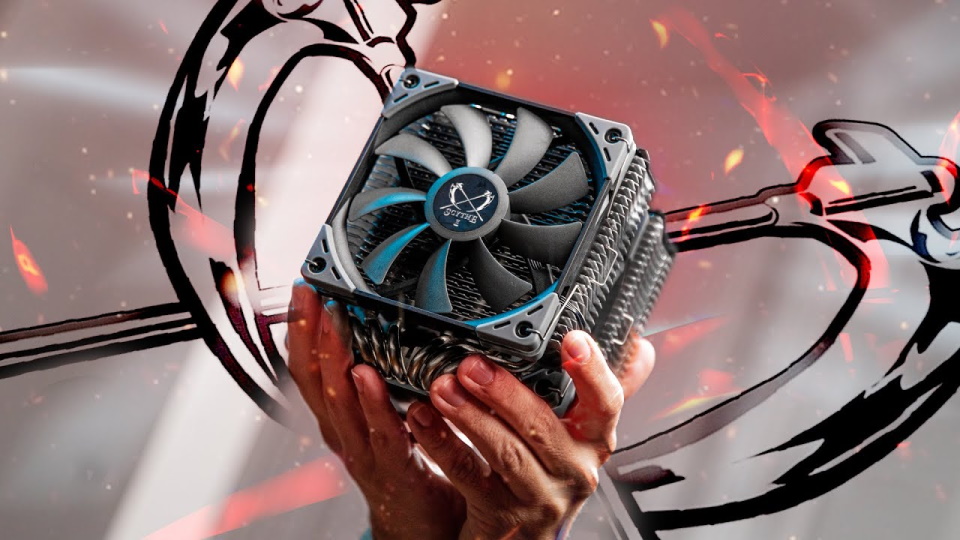Rating of the best tire changers for 2024

Anyone interested in opening a tire fitting company is advised to resolve the issue with working equipment in advance. The market offers a lot of configurations of machines for working with tires, so it is worth understanding the general provisions and specifics of such products. Regardless of the scale of the enterprise (post or full-fledged company), the owner will have to deal with the elaboration of details.
Features of tire changers
Automatic models are pneumatically driven. The pneumatic mechanism is controlled by means of a button or pedal, the operator is required only to press. The technician will automatically set the required distance between the disc and the tire. Such mechanics are remarkable for their convenience and saving of working hours for the operator. The number of operations per day grows significantly due to automatic mechanics, but the price of devices in this category is also impressive.
In variations on a semiautomatic device, the vertical of the device remains in a fixed state, and the worker is forced to perform the specified operations with his own hands. For inexperienced users, this factor can become a significant disadvantage, because more physical strength will need to be applied. Units of this type are small in size. The cost of a semiautomatic machine is more economical when compared with automatic models.
Automatic equipment
Workshops that have been operating for several years and have a stable flow of customers are interested in automatic equipment. Such units differ in that the employee is not required to use force or skills in working with tires. It is enough to fix the tire in the machine and set the required processing algorithm. Devices in this category do not belong to the economy segment, but the payback ratio of these machines is impressive.
Hofmann monty 3300-24

This device is notable for its wide functionality for working with tires. This copy has a certificate confirming the quality standard (delicate handling of rubber). Engineers from Germany and Italy have equipped the device with a reinforced pneumatic system, which makes it possible to operate both with a passenger car and a truck. The dimensions of the machine are optimal (1.9 m by 1.6 m by 1.85 m) with a weight of less than half a ton, which allows the machine to be placed in the workshop without disturbing ergonomics. The structure also has sections for keeping working tools.
- impressive efficiency indicators;
- ease of use;
- reinforced pneumatic system.
- not identified.
Feedback:
“The device is decent, it increases efficiency several times, no failures were noticed during operation. While this is not the cheapest position on the market, the cost pays off quickly. Would recommend to anyone looking for a quality wheel repair car! ”
Giuliano S 225 Evo
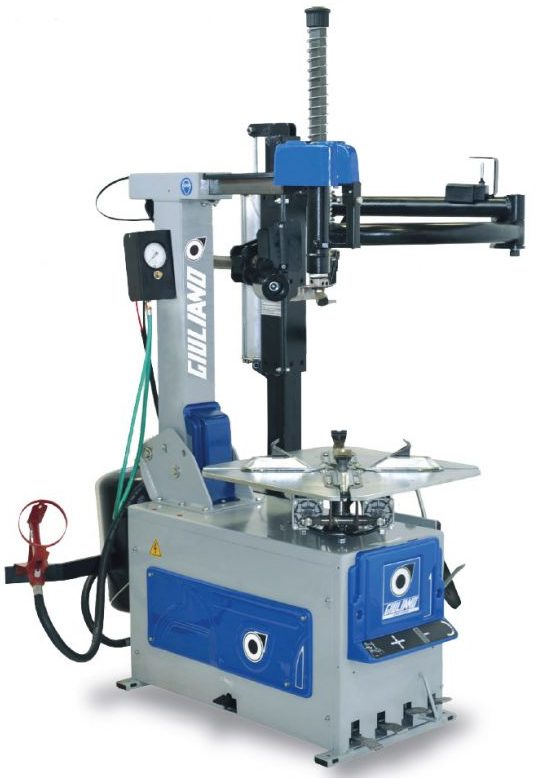
This model is suitable for small to medium sized businesses. It is not recommended to purchase it for workshops whose daily volume of work exceeds the average, since this machine cannot cope with such loads. Notably, this tire changer can handle both standard tires and low profile tires. The device is equipped with an auxiliary tool that greatly simplifies the operator's work.
- flexible adjustment of the machine;
- light weight;
- practical dimensions;
- complete tool;
- ease of use.
- lack of an enhanced regime.
Feedback:
“I have been using this unit in my garage workshop for over a year. It copes with rubber perfectly, and an additional tool makes the work much easier. Would recommend to anyone looking for a quality machine for a small workshop! ”
Ae & T 220b M-231bp36
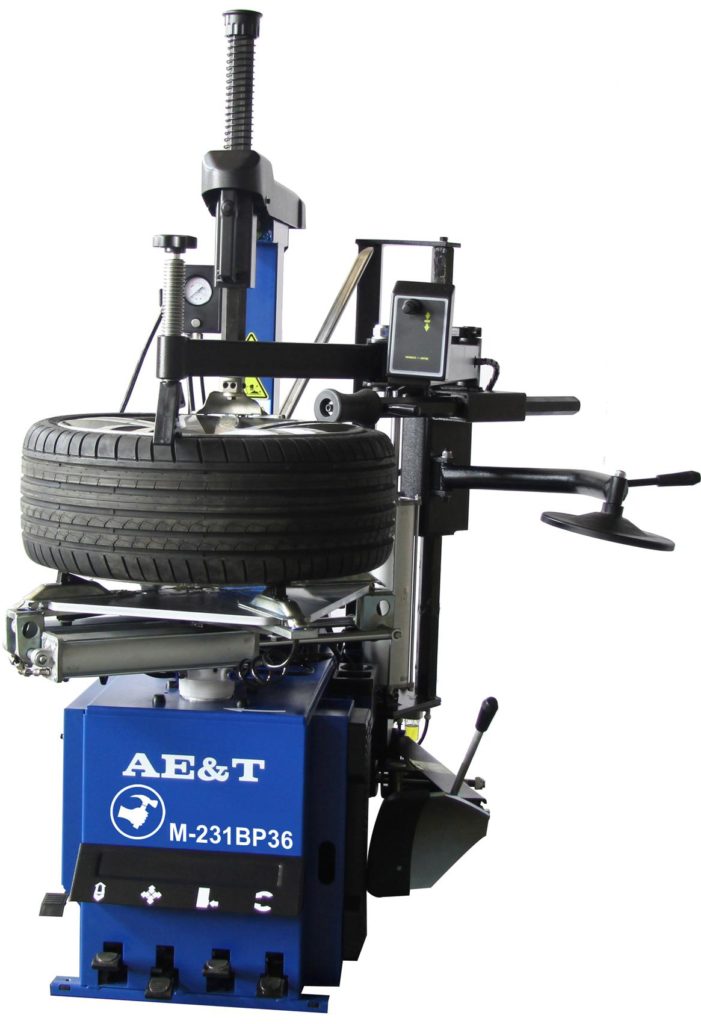
This piece is versatile and suitable for businesses of all sizes. The machine is compatible with standard 220 V power supply, which greatly simplifies operation. Repair of wheels of both passenger cars and trucks is allowed, and the complete tool allows you to perform operations with a low profile. Operation is simplified thanks to the pedal system (4 pcs.), So that the operator does not have to make unnecessary movements when working. Also, the system has a built-in explosive swap function. The owners give positive feedback regarding the operation of the automation on the machine and the moderate power requirements, as well as the build quality. It is worth considering that the model costs impressive money, since the manufacturer did not save on development.
- simplified power supply system;
- convenient control thanks to the pedal system;
- auxiliary tool included;
- an explosive swap function is integrated.
- expensive.
Feedback:
“In my workshop, this device works perfectly! During operation, there were no breakdowns or hitching, no maintenance was required. Automation in the machine works well, and thanks to an additional tool and a pedal system, the operator has time to perform an order of magnitude more work. I recommend it to everyone who is looking for a decent device! ”
Semi-automatic equipment
Machines of this category require manual efforts from the operator, but their cost is much more modest than that of the above-considered designs. Daily productivity will also drop by an order of magnitude when compared with pneumatics, although there is an opinion that an experienced craftsman achieves pneumatic results on a semi-automatic machine. Before proceeding with the purchase of a particular model, it is recommended that you familiarize yourself with the most popular items in this category.
Hofmann Monty 1270 Smart
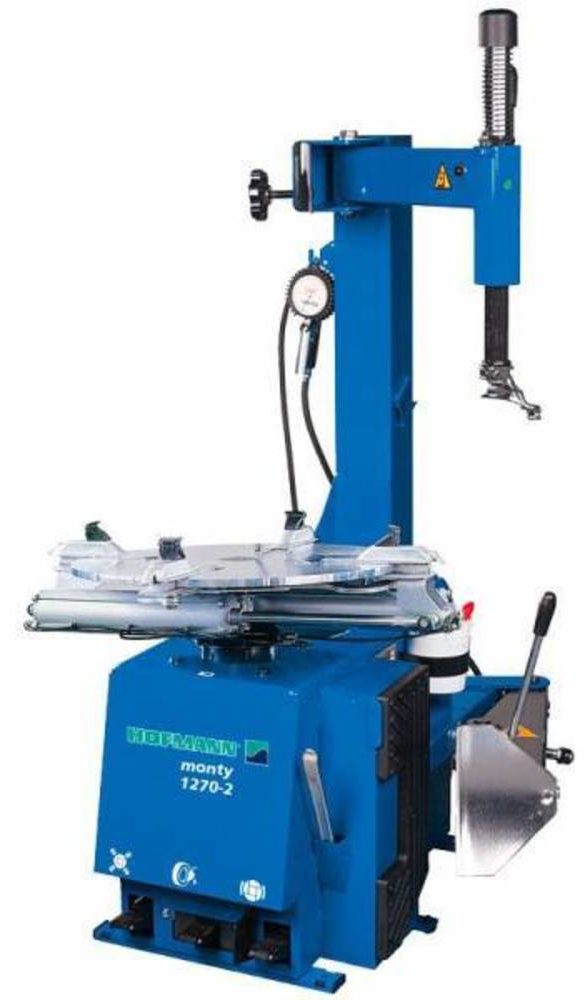
The model is notable for its advanced functionality and high-quality Italian assembly. The machine is assembled to the smallest detail in Italy in accordance with Italian and European quality standards. The company's engineers approached the development with the idea of making the design original and ergonomic, which they fully implemented. For example, the working surfaces are protected by upholstery, which prevents defects from inexperienced workers, so that even a beginner can easily handle the wheel accurately. This model is one of the most popular in the segment of such equipment, but it should be borne in mind that the price is also impressive. Manufacturing in Europe, combined with a well-thought-out architecture of the device, by default implies high cost.
- high quality;
- advanced functionality;
- design that allows processing the most accurately;
- impressive power indicators.
- high price.
Feedback:
“The Italian machine shows excellent results, even if you entrust it to a beginner! Thanks to the gaskets on the working parts, scrap is reduced to a minimum. I recommend it to everyone who is looking for a high quality machine and is willing to pay an impressive sum for it! ”
Giuliano Silverline Sl11
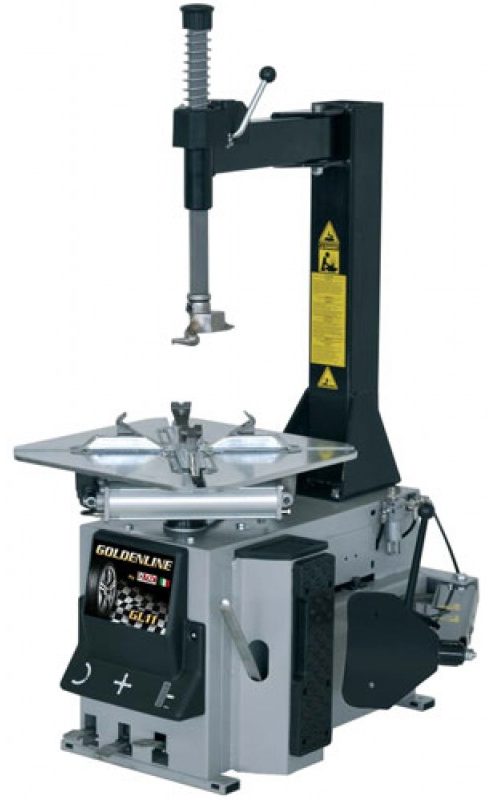
Like its predecessor, the Sl11 is of Italian origin. Designed for passenger car tires: sizes up to 24 ”are supported. The adjustment of the device is flexible, there is a pedal system, the stand has pneumatic clamps, so that the tire is firmly held. The owners note the reliability of the active parts of the mechanism, due to which the device does not fail for a long time. Domestic owners give good feedback on the strength of the assembly and the reliable mechanism of the technique.
- flexible settings;
- simplified management;
- clamps on pneumatics;
- high-quality assembly.
- not identified.
Feedback:
“A reliable device, it has not made any failures in more than 1.5 years of use. The operator praises the device for the smoothness of the mechanisms and the convenience of the pedal system. I recommend it to anyone looking for high quality semi-automatic equipment! ”
Nordberg 4639.5 380V
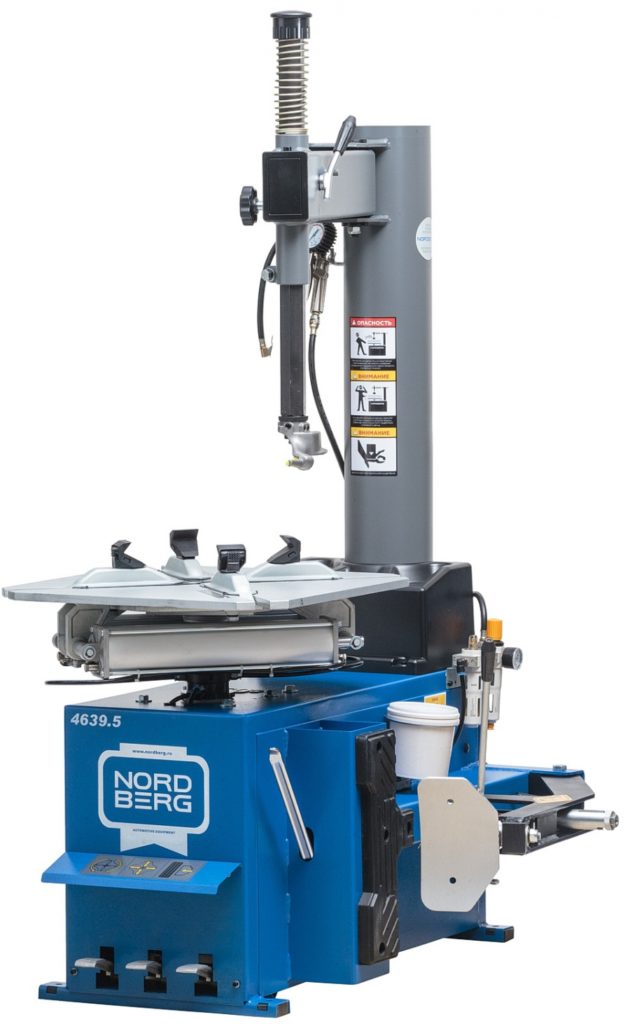
Compatibility with a wide range of metal alloys is remarkable. Additional tools are supported to partially relieve the operator. The company's engineers have reduced the level of vibrations produced, which also simplifies work by an order of magnitude. A lever is integrated into the design for adjusting the vertical position of the drive. The controls are located in the most convenient way (the architecture of the machine is thought out for ease of use). It is important to take into account that users give negative feedback regarding the processing of alloy wheels, but they speak positively about the capabilities of the machine in working with stamping.
- reduced vibration;
- stable work;
- drive adjustment;
- acceptable cost.
- not the best casting results.
Feedback:
“I bought this machine for a small workshop because it attracted the price and reasonable dimensions. Overall, the unit is reliable, although it gives mixed results with certain metals. I recommend it to anyone looking for an inexpensive technique for a small business! ”
Stands
A high-quality stand meets high requirements for structural reliability, ease of use, and budgetary cost (in relation to the customer's capabilities). The main requirement is full compliance with the range of tire repair works. Devices in this category are faced with the full range of services provided by the enterprise. The stand should be chosen depending on the orientation of the workshop: if the company's priority is the maintenance of large tires, then it is recommended to select the appropriate stand, and vice versa.
Sivik Std 106b
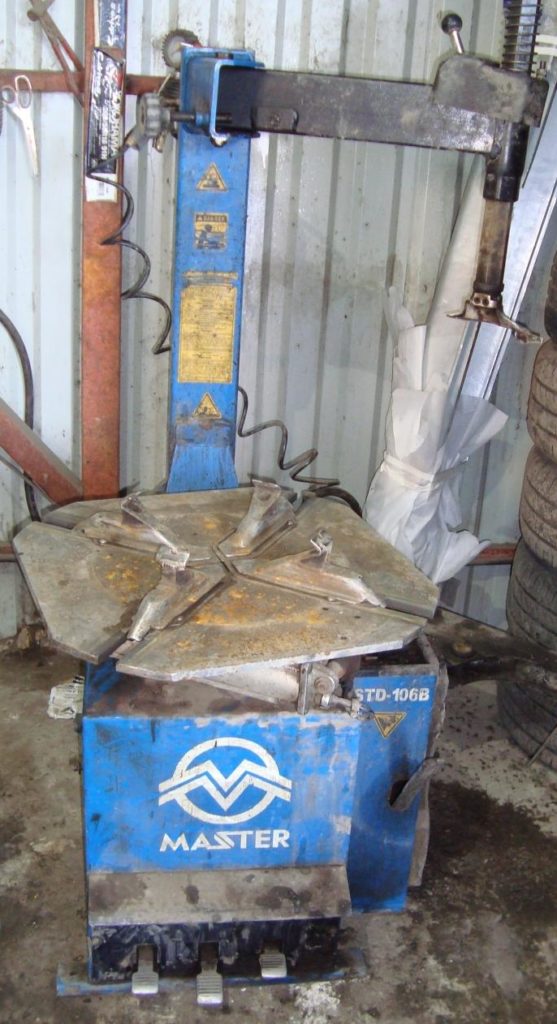
This is a model for small industries, which has standard functionality for a similar category. Designed for passenger car tires, can handle tires up to 24 ”. Recommended for enterprises with a low customer flow.
- acceptable cost;
- small dimensions;
- high structural reliability.
- not identified.
Feedback:
“Not a bad device for a beginner master. Functionality within the necessary, without additional features. I recommend it to small businesses! ”
KronVuz Kv-503
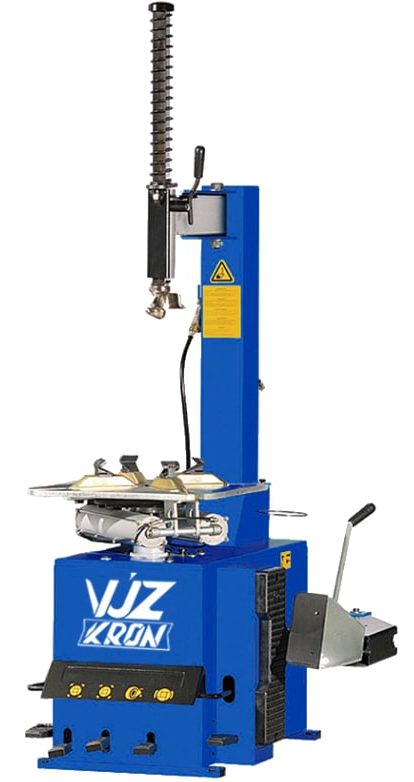
Like the previous copy, the machine was designed for a novice master. Noteworthy is the low cost of the machine and compatibility with a 220 V power supply. The customer receives an additional tool in the kit.
- acceptable price tag;
- complete set of the machine;
- compatibility with household network.
- not identified.
Feedback:
“A wonderful machine for a small business without a lot of customers. Given the additional tool in the kit and the low cost, this copy is the most attractive for beginners. Would recommend to anyone looking for an inexpensive tire changer! ”
Conclusion
It is important to understand that units whose power indicators do not exceed 1 kW are intended exclusively for the passenger car category. The advantage of these devices is their compatibility with a household network (220 V) and an economical consumption of electricity.
To process the tires of trucks, you need a device whose power exceeds 1 kW. Power indicators of such machines start from 3 kW, the most advanced models have characteristics that are an order of magnitude higher than the above number. In addition, machines in this category require a 3-phase power supply, household voltage will not work. There are automatic models of hybrid characteristics on the market: with relatively modest power indicators and the ability to power from a household network, processing of large tires is available. To be able to process cargo tires, it is necessary to connect an additional module to such models through the highway, due to which the machine compensates for the lack of power. It is important to keep in mind that presetting a pressure level that is higher than the pneumatic network for the entire workshop will lead to undesirable results.
The buyer also has access to full-fledged hybrids with the ability to power both from a household network (220 V) and from 380 V. It is worth purchasing such equipment in the case when in the main workshop the power network is 3-phase, and the reserve is 1-phase. In this case, the equipment transfers to power from the generator when the power supply is cut off.
Of course, the needs of a tire repair shop do not require an impressive amount of space. Among the existing enterprises there are micro workshops, which are located in a modest garage, whose footage does not exceed 8 m2. The main thing is the ergonomics of the workplace, because the operator has to perform a number of complex operations in a limited space. The interested applicant is advised to seriously consider the size of the unit before purchasing. Workshops with cramped conditions are advised to narrow the selection down to machines whose height and width are within 1 m or less.
Ergonomic restrictions also apply to rooms with average footage. Compact devices will save space in case things go uphill at the workshop and the owner is faced with the need to purchase additional equipment.
Compact machines are a priority for modern manufacturers. Engineers from renowned brands compete to achieve the best proportions of compactness and functionality in each new model. This design principle does not only apply to machines whose specialty is servicing large tires and tires from specialized equipment. Such machines reach up to 2 meters in height.
new entries
Categories
Useful
Popular articles
-

Top rating of the best and inexpensive scooters up to 50 cubic meters in 2024
Views: 97661 -

Rating of the best materials for noise insulation for an apartment in 2024
Views: 95021 -

Rating of cheap analogues of expensive medicines for flu and colds for 2024
Views: 91750 -

The best men's running shoes in 2024
Views: 87680 -

Top ranking of the best smartwatches 2024 - price-quality
Views: 85091 -

Best Complex Vitamins in 2024
Views: 84801 -

The best dye for gray hair - 2024 top ranking
Views: 82406 -

Rating of the best wood paints for interior use in 2024
Views: 77201 -

Ranking of the best action cameras from China in 2024
Views: 75268 -

Rating of the best spinning reels in 2024
Views: 74827 -

The most effective calcium supplements for adults and children in 2024
Views: 72462 -

Top rating of the best means for male potency in 2024 with a description
Views: 68295

